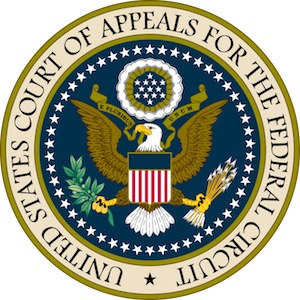 TecSec, Inc. v. Adobe Systems, Inc., Appeal No. 2015-1686, is a non-precedential case from the U.S. Court of Appeals for the Federal Circuit in which the Federal Circuit vacated a district court’s summary judgment of non-infringement. What is particularly interesting about this case is that Tecsec asked for the case to be reassigned. It seems that the district court judge had on several occasions sua sponte raised dispositive issues and then ruled against Tecsec. On appeal, the Federal Circuit said that was not enough for the case to be reassigned.
TecSec, Inc. v. Adobe Systems, Inc., Appeal No. 2015-1686, is a non-precedential case from the U.S. Court of Appeals for the Federal Circuit in which the Federal Circuit vacated a district court’s summary judgment of non-infringement. What is particularly interesting about this case is that Tecsec asked for the case to be reassigned. It seems that the district court judge had on several occasions sua sponte raised dispositive issues and then ruled against Tecsec. On appeal, the Federal Circuit said that was not enough for the case to be reassigned.
The Federal Circuit panel consisted of Judges Linn and Taranto, along with Chief Judge Prost. Judge Linn delivered the opinion for the panel.
TecSec’s patents were generally directed to methods and systems of multi-level encryption that allow encrypted files to be nested within other encrypted files. In addition to multi-level encryption, the patents further limited access by selecting and using labels attached to the encrypted files. TecSec’s charges of infringement against Adobe were focused on Adobe’s “Acrobat” program.
At the district court and prior to the completion of discovery, Adobe moved for entry of certain proposed claim constructions and for summary judgment of non-infringement, contending that TecSec could not show that Acrobat meets certain limitations from TecSec’s claims including the limitation of “selecting a label”. The district court limited discovery solely to those issues raised in Adobe’s summary judgment motion.
After briefing, the district court held a hearing on the summary judgment motion. At that hearing, the court questioned both parties with respect to the proper construction of the “selecting a label” limitation – and particularly whether “selecting” a label was different from “creating” a label. This occurred despite the fact that neither party had disputed the “selecting a label” limitation or sought a ruling on its construction, and despite the fact that Adobe had not asserted that element as missing from the accused Acrobat program. In addition to the district court’s questioning at the hearing, the district court also recognized that under the circumstances, supplemental briefing might be in order and expressly stated that it was “not opposed to giving [the parties] further time to brief it.” Both Adobe and TecSec declined the district court’s invitation.
Then, in its written opinion, the district court eventually addressed both the claim construction issues raised by Adobe and Adobe’s motion for summary judgment of non-infringement. However, the court began by first construing the “selecting a label” limitation. The court indicated that while the parties did not propose a construction for that limitation and declined the opportunity to brief the issue, they “clearly disputed” whether “selecting a label” could include either of creating a label or selecting the components that go into the label that gets created. For that reason, the court stated that that it had a duty to resolve the dispute, citing O2 Micro International, Ltd. v. Beyond Innovation Technology Co., 521 F.3d 1351, 1362 (Fed. Cir. 2008). The district court ultimately concluded that “before an object can be selected, it must first be created.” Thus, the district court reasoned that “selecting a label” means “choosing a pre-existing label” and not merely selecting “the components used in its creation”, for instance.
Also in its written opinion, the district court added the following “seemingly gratuitous” footnote – in the Federal Circuit’s words – regarding the separate limitation of labeling the encrypted object itself:
Although not briefed by the parties, there are other aspects of the DCOM Patents that Acrobat does not perform. For example, each asserted claim requires some form of “labelling” [sic]. At TecSec’s urging, “labelling” has been construed to mean “attaching a label.” Acrobat does not attach an encryption dictionary to an encrypted PDF document; instead, it inserts the encryption dictionary into the (pre-existing) trailer for that file…Indeed, far from being attached to the encrypted object, ‘[t]he encryption dictionary is part of the trailer portion of a PDF document.’…Thus, what TecSec alleges is a label is not “attached to” the object, it is part of the object.
TecSec then argued on appeal that the district court’s footnote was procedurally flawed because TecSec was not permitted discovery on this issue and was never given an opportunity to respond, in violation of Federal Rules of Civil Procedure 56(f). TecSec also contended that the substantive basis for the district court’s decision was flawed.
In response, the Federal Circuit noted that “Federal Rule of Civil Procedure 56(f) allows a district court to grant summary judgment on a ground not raised by a party ‘[a]fter giving notice and a reasonable time to respond.’…It [is] undisputed that the district court failed to provide TecSec with any opportunity to respond with respect to the “labelling” limitation. In this regard, the district court procedurally erred in making the statements set forth in [the] footnote. We give that footnote no weight and do not address whether a genuine issue of material fact exists as to whether Acrobat meets the labelling limitation…”
The Federal Circuit then went on to explain that, while TecSec had urged the panel to reassign the case to a different judge on remand in part because the district court judge repeatedly held against TecSec, raised dispositive issues sua sponte, had been reversed on appeal for many of those issues, and had pre-judged a § 101 issue that has not yet been raised, reassignment is only appropriate in exceptional circumstances.
“Here, reassignment is governed by Fourth Circuit law, which applies a three factor test for reassignment: 1) whether the judge would be reasonable expected to have substantial difficulty putting her views that were held to be incorrect out of her mind; 2) whether reassignment is necessary to preserve the appearance of justice; and 3) the degree of waste of judicial resources and duplication if the case were reassigned. See United States v. Guglielmi, 929 F.2d 1001, 1007 (4th Cir. 1991). Nothing in this case merits reassignment on remand. Though [the district court judge] has indeed ruled against TecSec several times, there is no indication that these rulings are biased, or are based on anything other than the exercise of her reasoned judgment and appropriate judicial discretion. Though [the district court judge] has indeed raised more than one dispositive issue sua sponte, the Federal Rules of Civil Procedure specifically empower district courts to do so, subject to certain procedural requirements. See Fed. R. Civ. P. Rule 56(f). Moreover, given the six-year journey of this case through the judicial system, and its multiparty complexity, reassignment would create significant unnecessary waste of judicial resources. Here, we are not persuaded that any of the factors in the Fourth Circuit’s test are met. Reassignment thus is not appropriate in this case.”

![[IPWatchdog Logo]](https://ipwatchdog.com/wp-content/themes/IPWatchdog%20-%202023/assets/images/temp/logo-small@2x.png)

![[Advertisement]](https://ipwatchdog.com/wp-content/uploads/2024/03/IP-Copilot-Apr-16-2024-sidebar-700x500-scaled-1.jpeg)
![[Advertisement]](https://ipwatchdog.com/wp-content/uploads/2024/04/Patent-Litigation-Masters-2024-sidebar-early-bird-ends-Apr-21-last-chance-700x500-1.jpg)

![[Advertisement]](https://ipwatchdog.com/wp-content/uploads/2021/12/WEBINAR-336-x-280-px.png)
![[Advertisement]](https://ipwatchdog.com/wp-content/uploads/2021/12/2021-Patent-Practice-on-Demand-recorded-Feb-2021-336-x-280.jpg)
![[Advertisement]](https://ipwatchdog.com/wp-content/uploads/2021/12/Ad-4-The-Invent-Patent-System™.png)







Join the Discussion
2 comments so far.
Valuationguy
October 26, 2016 11:21 am<>
The above reason appears to me to justify the need to reassign the case….especially under the circumstances of the case where the judge DIDN’T follow the proper procedures to consider an issue sua sponte, injected his judgment into the issues actually under controversy and CONSISTENTLY found against one party.
Really??….how biased do you really need to be? Its not ACTUAL or PROVEN bias that justifies shifting the case to a new judge….its the APPEARANCE of bias…..and this case appears to have plenty. Sad…but not unexpected given Prost and Linn was on the panel.
Bemused
October 25, 2016 09:04 amSigh. As if protecting intellectual property isn’t tough enough, here we have a district court judge doing everything in her power to boot this case. If a judge doesn’t want/like patent cases, why don’t they just transfer it to another judge and claim they’re doing it due to workload or some other made up reason?
Maybe some judges have lost an understanding of the real world consequences (in this case, to the patent owner/inventor/counsels) from their biases?
I suspect some of this is due to the anti-inventor narrative that has been pushed by Big Tech which equates patent litigation with extortion instead the rights of patent holders to defend themselves against infringers (okay, I’ll get off my soap box now).
Kudos to Tec Sec’s counsel at Hunton & Williams for having the chops to ask the CAFC for reassignment on remand.
Kudos to